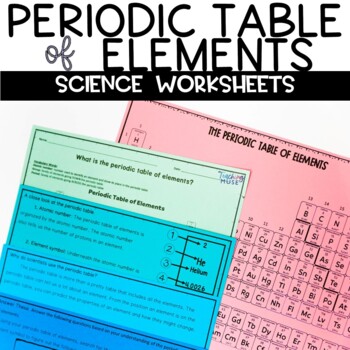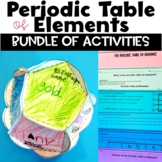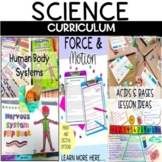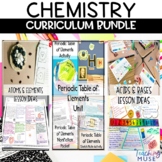Periodic Table of Elements Reading Activity
- PDF
What educators are saying
Also included in
- Students will learn about the periodic table of elements using these fun activities. Students will learn and practice the concepts through a teacher presentation, science text, a scavenger hunt, choice assignments, review activities, and a poster project. Interested in reading about how I teach tPrice $19.95Original Price $28.50Save $8.55
- Looking for a science curriculum to last all school year that will help you teach your physical science, life science, Earth science, and chemistry units? Check out everything this science curriculum has to offer. This year-long science curriculum includes science texts, hands-on activities, classroPrice $326.71Original Price $363.01Save $36.30
- Teach your students about chemistry using these materials that will allow students to read to learn about chemistry concepts and practice what they learned. This Chemistry Bundle includes states of matter, physical and chemical changes, atoms, elements, and the periodic table. This chemistry bundlePrice $100.60Original Price $125.75Save $25.15
Description
Teach your students about the periodic table of elements through these seven science texts. Students will understand simple substances, Dimitri Mendeleev, chemical symbols, the periodic table of elements, families of the periodic table, metals, metalloids, and nonmetals. Also included is a student-friendly version of the periodic table in color and black and white. Students will learn about elements and how the table is organized. This activity is perfect when introducing or reviewing the material. In addition, it can be used as a homework assignment to gauge independent comprehension.
Like this periodic table of elements lesson? Check out the unit and save 20% by clicking here.
Students will learn:
- What elements are
- Dimitri Mendeleev, the first scientist to organize the periodic table of elements
- Chemical symbols - how to read and write them
- Periodic table of elements - how it is organized, how to read periods and groups, finding elements, knowing that elements near each other share similar properties
- Families of the periodic table: Students will learn about the characteristics of each family group on the periodic table, including alkali metals, alkaline earth metals, transition metals, mixed metals, halogens, and noble gases
- Metals - similarities and characteristics of metals
- Metalloids and nonmetals - similar properties and nonmetal families, including the carbon family, nitrogen family, halogen family, the oxygen family, noble gases, and hydrogen.
This lesson includes:
- Sneak peek into my classroom: A summary of how I use this in my classroom.
- Eighteen printable student worksheets to assess understanding of:
- Simple substances
- Chemical symbols
- Dimitri Mendeleev
- Periodic table of elements
- Families of the periodic table
- Metals
- Metalloids and nonmetals
- Student-friendly version of the periodic table in both color and black and white
- Answer key
How to use this activity in your classroom:
- An introduction to the periodic table
- Science station activity
- Review activities
- Homework assignment
- Sub plans
- Enrichment for fast finishers
- Reinforcement for students
Feedback from teachers:
- This is a great packet to review the periodic table of the elements! This can be used to help students prepare for state testing. Thank you!
- This is a great introduction to the Periodic Table. The reading material is a good level for middle school, and it clearly introduces what the table is/does. Thanks for the quality product!
- It can be used for interventions or additional resources for our chemistry unit.
- This was a great activity to help students with learning disabilities implement reading into the curriculum.
- This resource made teaching elements and the periodic table so much easier for my students to understand! Thank you!
Other lessons and activities to support your periodic table unit:
Kindly Note: If you have questions, do not hesitate in emailing me at Teaching Muse's Email
PLEASE PREVIEW BEFORE PURCHASING
__________________________________________________________________
Thank you for visiting Teaching Muse. I would love for you to become a follower.
Teaching Muse followers receive new product information and discounts on any new items!
__________________________________________________________________
All rights reserved by Teaching Muse. This product is to be used by the original downloader ONLY. Copying for more than one teacher, classroom, department, school, or school system is prohibited. Additionally, this product may not be distributed or displayed digitally for public view. Failure to comply is a copyright infringement and violates the Digital Millennium Copyright Act (DMCA). They are intended for classroom and personal use ONLY.








